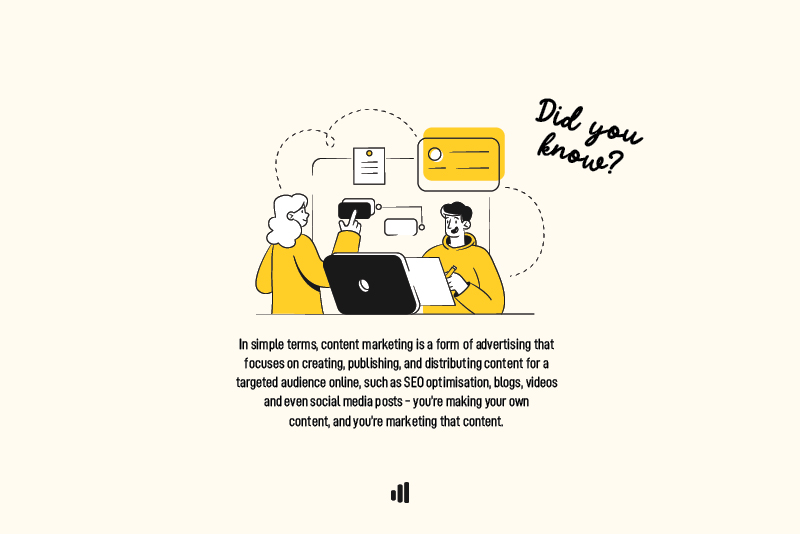Even seasoned advertising executives have found themselves pondering what is content marketing, but the art of this process isn’t quite as complex as it sounds.
Once upon a time, many bricks and mortar businesses relied on strategies like word of mouth and print advertising to attract new customers. However, there’s no denying that we now live in a digital world, and the importance of a strong presence on the internet has seen many owners scrambling to jump on the bandwagon.

However, even highly experienced e-commerce traders regularly make the mistake of relying too much on “pay per click” strategies such as campaigns through Google Ads and social media advertising. Thinking that these formats are their best option at getting seen, many quickly become frustrated at the cost associated with these practices.
Although they can be useful, they should be treated as a way to boost your content marketing, and not approached as a shortcut. As such, many business owners have now turned their attention towards search engines to track down an alternative, with research showing one of the most common queries being “what is content marketing”.
The World Of Content Marketing Explained
In simple terms, content marketing is a form of advertising that focuses on creating, publishing, and distributing content for a targeted audience online, such as SEO optimisation, blogs, videos and even social media posts – you’re making your own content, and you’re marketing that content.
However, because this style of advertising doesn’t yield instant results, it can be harder to track your efforts – but that doesn’t mean that you shouldn’t actively pursue it. When compared to “pay per click” style advertising, content marketing offers a “Plan B”. As a means to organically drive traffic to a website without ongoing costs attached to the process, business owners are now viewing content marketing as somewhat of an insurance policy for protecting valuable online real estate, particularly when it comes to the lofty heights of the Google search engine rankings.
According to market leader Hubspot, brands are thirteen times more likely to see positive return on investment when they put regular blogging – one of the most common forms of content marketing – as a top priority. However, it’s relatively uncommon to see business blogs and articles go straight for the jugular when it comes to the hard sell, as it’s just not the place or platform to push products or services.
Instead, consistent and quality efforts linked to content marketing should be your brand’s way of capturing the attention of the right audiences, building a relationship of sorts with them, and ideally then converting them into a happy, loyal customer. It’s a slow burn, but the real value of content marketing lies in it’s return over the long term.
The bread and butter of any good content marketing strategy with a focus on boosting a brand’s Google presence is your website’s blog. When properly optimised using keywords, titles and headers, meta description and the right length, a blog or an article can come in many different formats. If you’re stuck for ideas, try writing a piece that is list based, is a how to guide, or even interviews in news style editorial, but aim to write evergreen content that will last forever and not expire.

When trying to wrap your head around what is content marketing, understanding the technical side of business is often where ambitious brand owners come unstuck. A lack of time, energy or resources are often serial offenders as to why many brands ignore content marketing all together – but what if we told you that there was another way of making your mark online while minimising the workload?
Partner With The Professionals In Content Marketing
Now that you know why your website needs a solid content marketing strategy in order to succeed, it’s time to get moving. However, producing quality, consistent and on brand content takes time, effort, experience and resources – and you’re not alone if you can’t quite commit to that. Avoiding blogging for business altogether may actually be doing your brand a disservice, but thankfully – investing in a solid content marketing strategy has never been easier.
Here at Content Hive, producing top quality digital content is exactly what we do best. We have itemised a list of digital content services, and allocated credits next to each of these. This means that each month, you can use your credits with us to produce digital content such as blog articles, social media posts, videos and even animated Instagram stories. By using this model, we believe that it enables us to produce high quality content with faster delivery times. It also means that because you have a monthly credit, you are going to want to make sure you use these up – and so do we – meaning that your digital content is always consistent.
If you aren’t quite sure where to start on your digital marketing journey and would like to speak to a professional, why not book in a free discovery call with us at Content Hive today to discuss how we can get your brand buzzing online.


